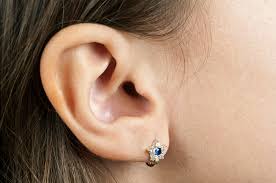
Ear piercing has become a widely accepted practice among various cultures and is often seen as a rite of passage for children. However, the decision to pierce a child's ears is not one to be taken lightly. From health considerations to personal choice and the emotional readiness of the child, there are numerous factors that parents must consider. This article aims to provide a well-rounded perspective on children's ear piercing, including its benefits, risks, and best practices to ensure a safe and positive experience.
Ear piercing has deep-rooted cultural significance in many societies. In some cultures, it is part of a significant ceremony or milestone in a child’s life. For others, it may simply reflect personal style and identity. Parents must weigh these cultural aspects against their family’s values and beliefs when considering ear piercing for their children.
There is no universally agreed-upon age for ear piercing. Many professionals suggest that it’s best to wait until the child is old enough to express their desire for the procedure, which typically falls between ages 5 to 10. At this age, children are more likely to understand the implications of having pierced ears and can also take a more active role in the aftercare process.
When it comes to safety, the environment where the piercing takes place is paramount. It is crucial to select a reputable piercing studio or a licensed professional who uses sterile equipment and follows proper hygiene practices. Here are some essential health considerations:
Sterility: Ensure that the piercing is done with sterilized instruments. Reputable establishments will have clear protocols for sterilizing equipment to minimize the risk of infection.
Aftercare: Proper aftercare is critical to prevent infections. Parents should be informed about how to care for their child’s newly pierced ears, including cleaning routines and what to avoid during the healing period. Typically, it takes about 6-8 weeks for lobes to heal.
Allergies and Skin Reactions: Some children may be allergic to certain metals. Opt for hypoallergenic materials, such as surgical-grade stainless steel or titanium, which are less likely to cause skin irritations.
Before considering ear piercing, it's essential to gauge your child's emotional readiness. The experience can be stressful, and children should ideally be able to communicate their desire for the procedure. Here are some ways to assess readiness:
If you decide to proceed with ear piercing, involve your child in the decision-making process. Talk openly about what to expect, and help them express any concerns they may have. This collaborative approach can empower your child and alleviate anxiety about the experience.
When the day arrives for the piercing, here are some tips to ensure a smooth process:
Children’s ear piercing can be a joyful experience that marks an important milestone. By carefully considering the emotional, cultural, and health aspects of the decision, parents can ensure that their child has a safe, positive experience. Regardless of when and how parents choose to proceed, the key takeaway is to foster an environment of open communication, safety, and care, so that this rite of passage is a cherished moment for both parent and child.
If you would like to take advantage of my clidrens ear piercing service please call Claire Watts on 07903517415.